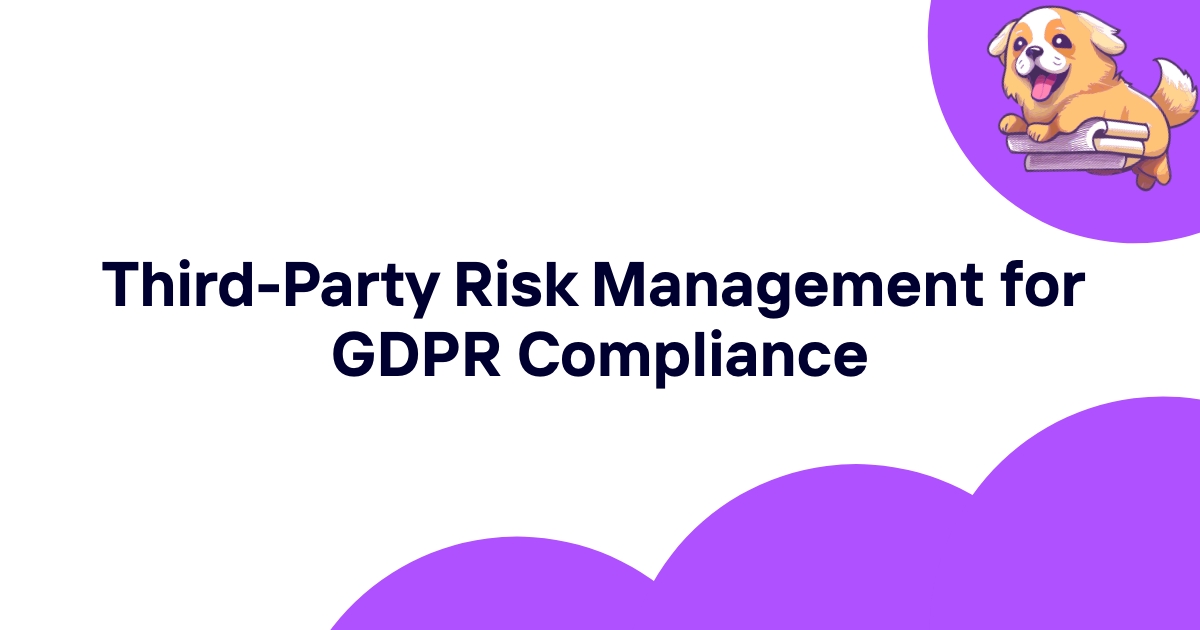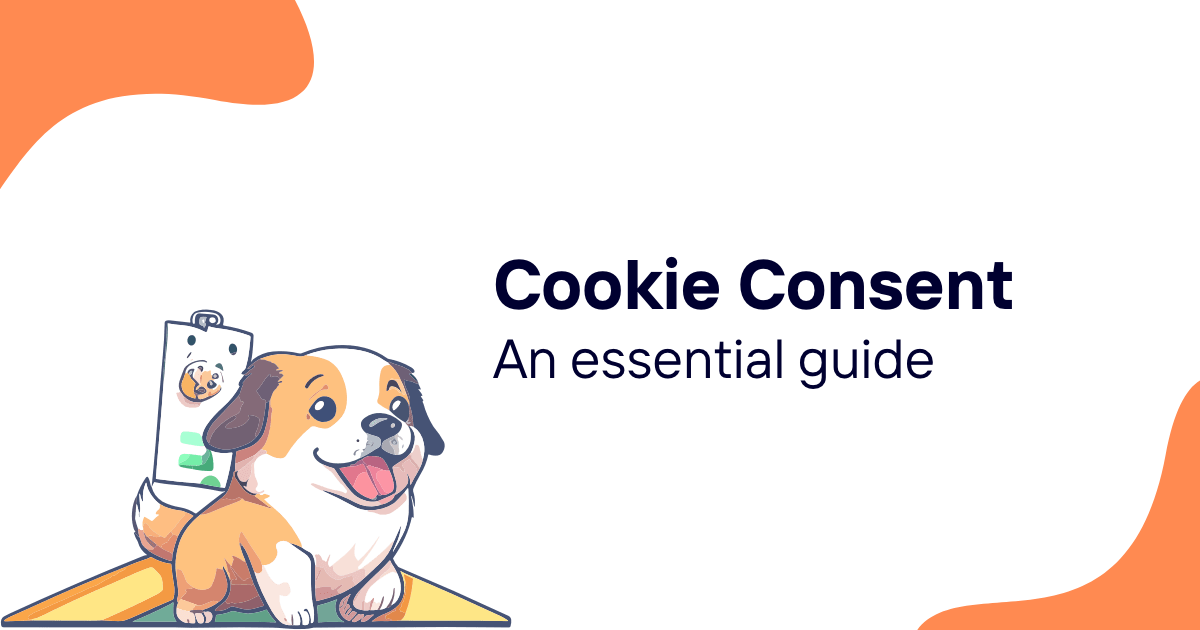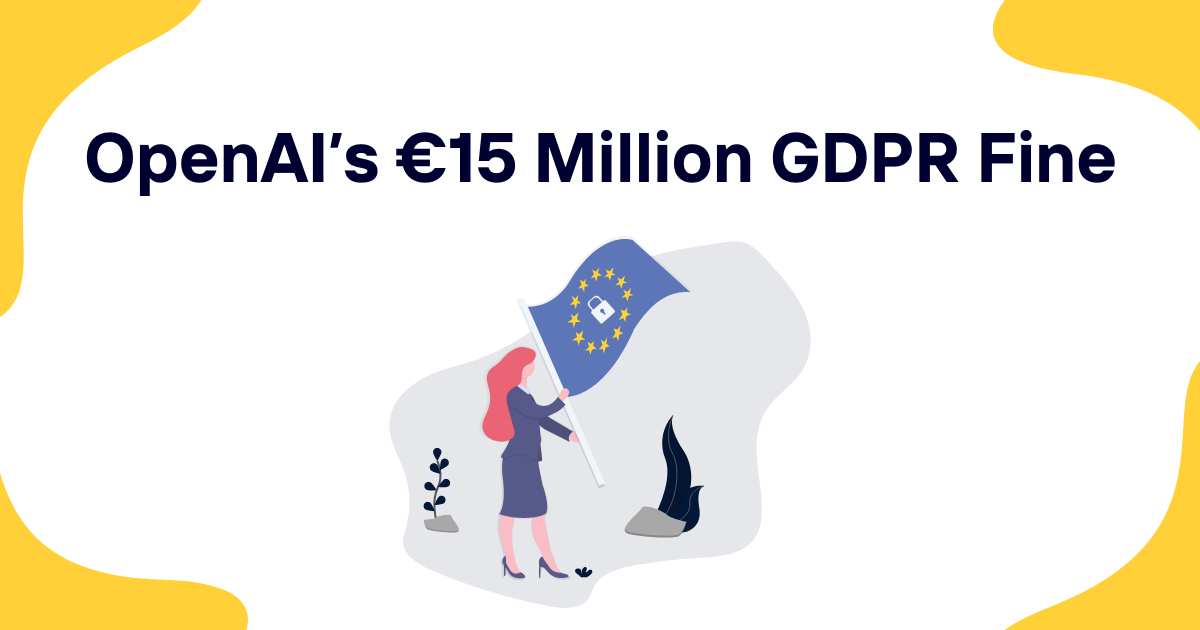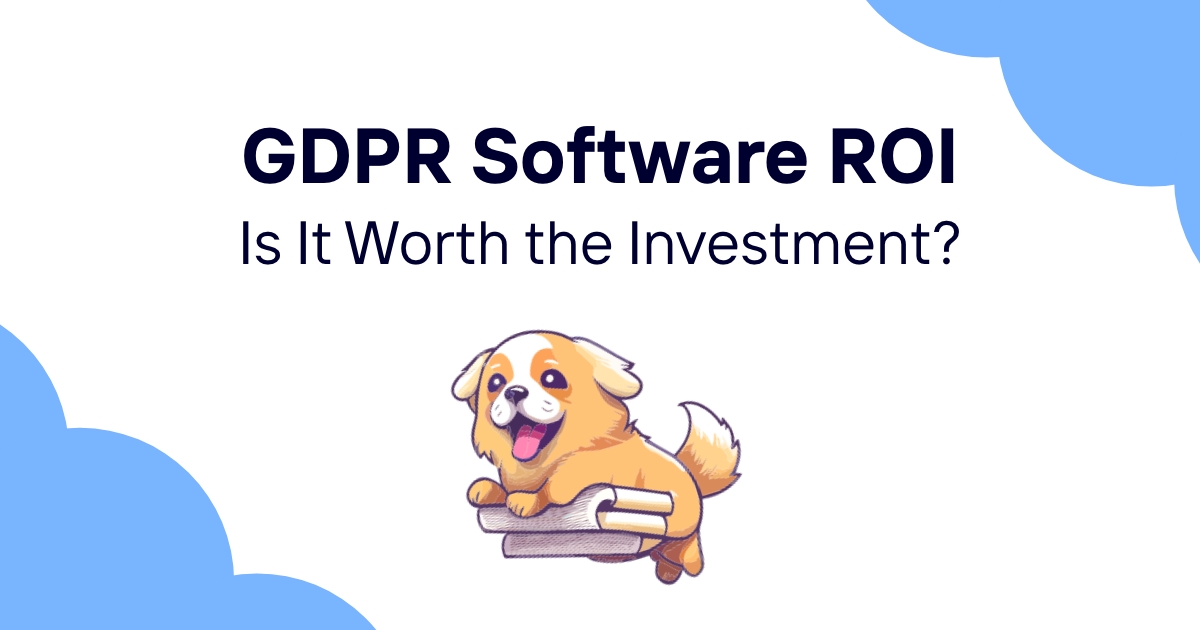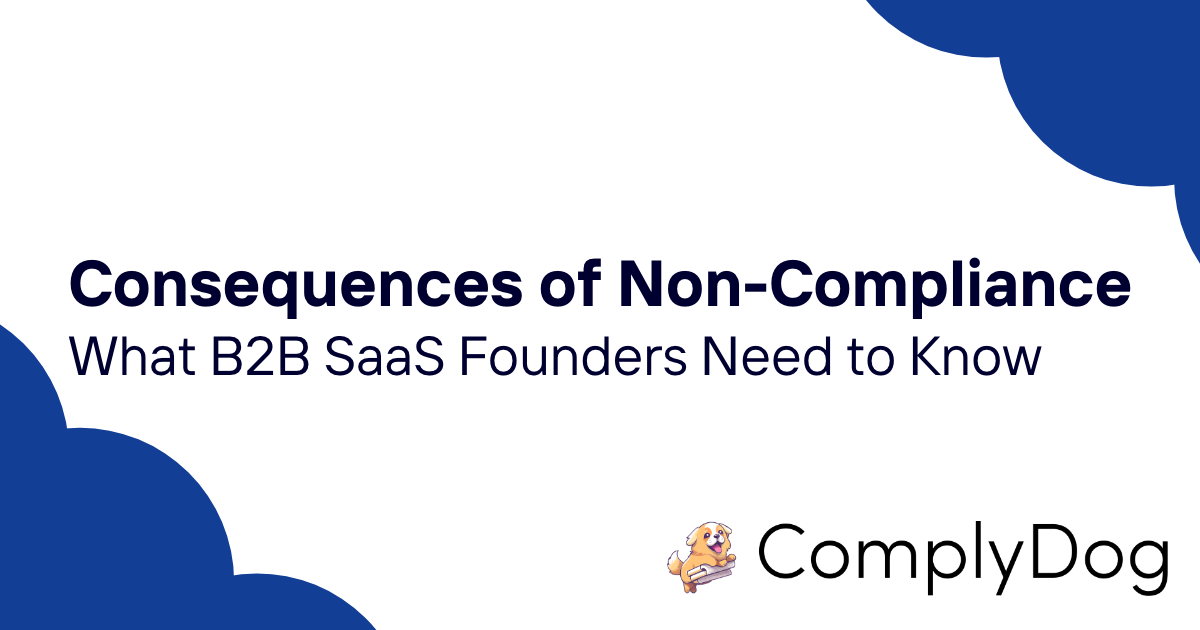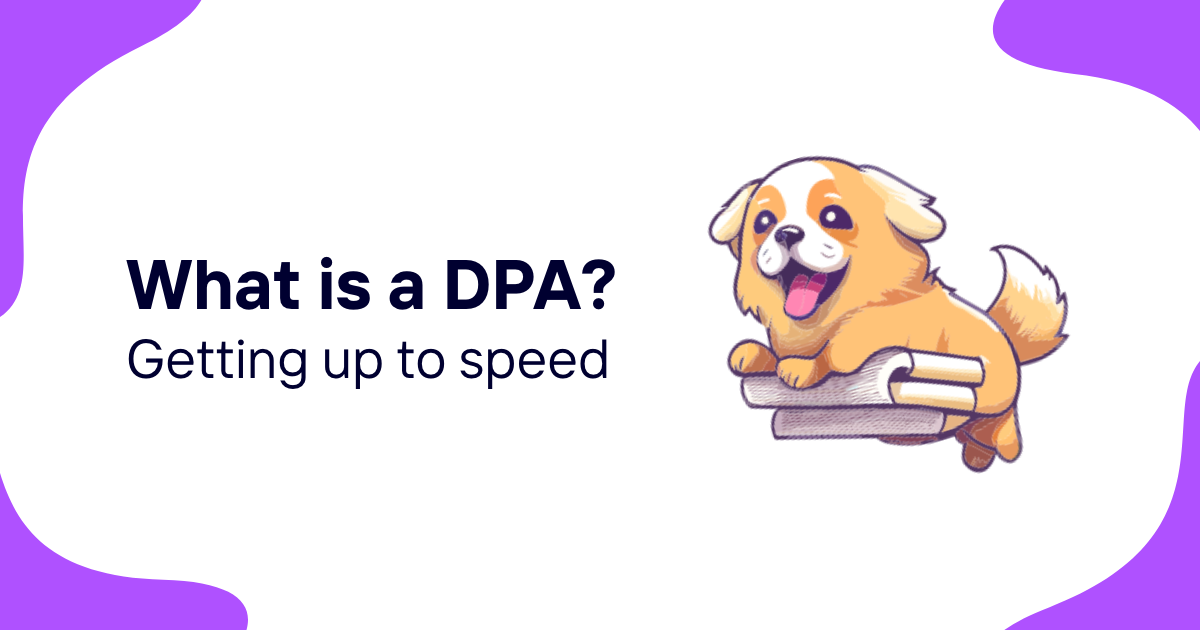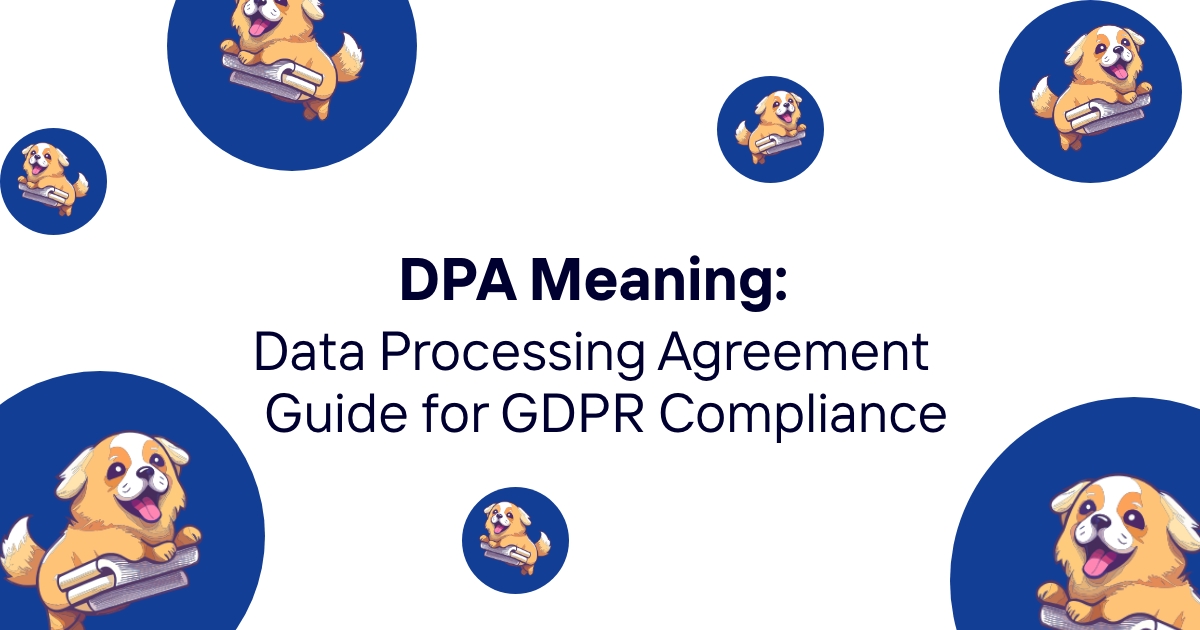Your organization's GDPR compliance is only as strong as your weakest vendor. Third-party data breaches, inadequate privacy controls, and vendor compliance failures regularly expose organizations to regulatory penalties they didn't cause but remain responsible for.
GDPR holds data controllers accountable for processor actions, making vendor risk management essential rather than optional. A single vendor's privacy failure can trigger investigations, fines, and reputation damage that affects your entire organization.
This guide provides comprehensive strategies for managing third-party privacy risks that protect your organization while enabling productive vendor relationships that support business objectives.
Third-Party Risk Under GDPR
Controller Accountability for Processors
GDPR Article 28 makes controllers responsible for ensuring processors implement appropriate technical and organizational measures to protect personal data adequately.
Controllers must use only processors that provide sufficient guarantees regarding GDPR compliance and their ability to meet data protection requirements.
Joint liability provisions mean controllers can face penalties for processor violations even when the controller organization didn't directly cause the compliance failure.
Risk Categories and Types
Data processing risks include unauthorized access, inadequate security measures, and improper data handling by vendor staff or systems.
Cross-border transfer risks emerge when vendors process personal data in countries without adequacy decisions or appropriate safeguards.
Sub-processor risks multiply when vendors engage additional third parties without proper oversight or contractual protection.
Compliance risks arise when vendors lack understanding of GDPR requirements or implement inadequate privacy controls.
Shared Responsibility Models
Data processing agreements must clearly allocate GDPR obligations between controllers and processors to avoid gaps or conflicts in responsibility.
Security responsibilities require defining which party implements specific technical and organizational measures for different aspects of data protection.
Incident response duties need clear specification of notification requirements, investigation responsibilities, and remediation obligations for each party.
Individual rights handling procedures must specify how vendors support controller obligations for access, correction, deletion, and other data subject rights.
Vendor Due Diligence Process
Initial Vendor Assessment
Privacy questionnaires should gather detailed information about vendor data handling practices, security measures, and GDPR compliance capabilities.
Technical assessments evaluate vendor systems, architectures, and security controls that protect personal data during processing activities.
Compliance certifications review relevant standards like ISO 27001, SOC 2, or industry-specific privacy certifications that demonstrate vendor commitment to data protection.
Reference checks with existing clients provide insights into vendor privacy practices and incident history that might not be apparent from formal assessments.
Financial and Operational Stability
Financial stability assessment ensures vendors can maintain security investments and compliance capabilities throughout contract periods.
Operational resilience evaluation examines vendor business continuity planning and disaster recovery capabilities that protect personal data during emergencies.
Management stability review considers vendor leadership changes that might affect privacy priorities or compliance capability over time.
Insurance coverage verification confirms vendors maintain appropriate cyber liability and errors and omissions coverage for potential privacy incidents.
Legal and Regulatory Review
Jurisdiction analysis evaluates legal environments where vendors operate and how local laws might affect personal data protection.
Regulatory compliance history review examines vendor track record with privacy authorities and any enforcement actions or investigations.
Legal capacity assessment ensures vendors can enter into appropriate data processing agreements and meet ongoing compliance obligations.
Litigation history review identifies privacy-related lawsuits or disputes that might indicate systemic vendor privacy problems.
Technical Capability Assessment
Security architecture review evaluates vendor technical controls including encryption, access management, and monitoring systems.
Data lifecycle management assessment examines how vendors handle personal data collection, storage, processing, and disposal activities.
Integration capability review ensures vendors can implement required technical measures without compromising existing security or compliance systems.
Scalability assessment confirms vendors can maintain privacy protection as processing volumes increase or business requirements evolve.
Risk Assessment Methodology
Risk Identification Framework
Data sensitivity analysis considers types of personal data vendors will process and potential harm to individuals if protection fails.
Processing complexity evaluation assesses vendor activities including data collection, analysis, sharing, and retention that create different risk levels.
Technical risk factors include system vulnerabilities, integration challenges, and cybersecurity threats that could compromise personal data.
Organizational risk elements encompass vendor staff training, governance procedures, and compliance culture that affect privacy protection effectiveness.
Risk Likelihood Assessment
Historical incident analysis reviews vendor track record for data breaches, compliance violations, and privacy-related problems.
Industry risk patterns consider sector-specific threats and vulnerabilities that might affect vendor operations and data protection capabilities.
Technical maturity evaluation assesses vendor security practices and their ability to prevent or detect privacy incidents promptly.
Operational environment analysis examines vendor business context including customer base, geographic operations, and regulatory environment.
Impact Evaluation Methodology
Individual harm assessment considers potential consequences for data subjects if vendor privacy protection fails or personal data is compromised.
Regulatory penalty exposure evaluates potential fines and enforcement actions that could result from vendor compliance failures.
Reputation damage analysis considers how vendor privacy incidents might affect your organization's brand and customer relationships.
Business disruption assessment examines how vendor privacy failures might interrupt operations or require emergency response activities.
Risk Scoring and Prioritization
Quantitative scoring systems enable consistent risk evaluation across different vendors and contract renewal decisions.
Risk tolerance thresholds help determine which vendor relationships require additional controls or might be unsuitable for your organization.
Portfolio risk assessment considers cumulative effects of multiple vendor relationships and concentration risks from over-reliance on specific providers.
Dynamic risk updating ensures assessments remain current as vendor circumstances change and new information becomes available.
Contractual Protection Requirements
Data Processing Agreement Essentials
Subject matter and duration specifications clearly define what personal data vendors process and time periods for processing activities.
Nature and purpose descriptions explain why vendor processing is necessary and what business objectives it supports.
Personal data categories and data subject types provide comprehensive inventories of information vendors handle.
Controller obligations specify your organization's responsibilities for instruction, oversight, and compliance verification throughout the vendor relationship.
Technical and Organizational Measures
Security requirements mandate specific technical controls vendors must implement including encryption, access controls, and monitoring systems.
Staff training obligations ensure vendor personnel understand privacy requirements and handle personal data appropriately.
Incident response procedures require vendors to notify you promptly of privacy incidents and cooperate in investigation and remediation activities.
Audit rights enable you to verify vendor compliance through reviews, assessments, and third-party examinations.
Sub-Processor Management
Prior authorization requirements prevent vendors from engaging additional processors without your explicit approval and risk assessment.
Due diligence obligations require vendors to assess sub-processor compliance capabilities before engagement and throughout relationships.
Flow-down provisions ensure sub-processors accept same data protection obligations as primary vendors through appropriate contractual arrangements.
Liability allocation clarifies responsibility for sub-processor actions and ensures you maintain recourse if sub-processors cause privacy incidents.
Data Transfer Safeguards
Transfer mechanism specification identifies legal basis for international transfers including adequacy decisions or appropriate safeguards.
Standard Contractual Clauses implementation ensures adequate protection when transferring personal data to countries without adequacy decisions.
Transfer impact assessments evaluate additional risks in destination countries and supplementary measures needed for adequate protection.
Data localization requirements specify geographic restrictions on data storage and processing when business or legal requirements demand local control.
Ongoing Monitoring and Management
Performance Monitoring Systems
Compliance dashboards provide real-time visibility into vendor privacy performance including incident rates, audit results, and certification status.
Key performance indicators track vendor compliance metrics including response times for individual rights requests and security incident frequency.
Automated monitoring tools can detect vendor compliance issues or security incidents that require immediate attention or investigation.
Regular reporting requirements ensure vendors provide ongoing transparency about privacy practices and any changes that might affect risk levels.
Periodic Assessment Procedures
Annual compliance reviews verify ongoing vendor adherence to contractual privacy obligations and evolving regulatory requirements.
Risk reassessment cycles update vendor risk profiles based on changing business circumstances, new threats, or regulatory developments.
Audit scheduling ensures regular verification of vendor privacy controls through internal reviews or third-party examinations.
Certification renewal tracking monitors vendor maintenance of relevant privacy and security certifications throughout contract periods.
Relationship Management Activities
Regular communication maintains awareness of vendor privacy initiatives, challenges, and changes that might affect your compliance status.
Joint improvement planning identifies opportunities to enhance privacy protection through collaborative efforts or system upgrades.
Issue escalation procedures ensure privacy concerns receive appropriate attention and resolution without unnecessary delays.
Contract performance review assesses vendor delivery against privacy commitments and identifies areas where improvements might be needed.
Change Management Oversight
Vendor notification requirements ensure you receive advance notice of changes that might affect privacy risk or compliance status.
Change approval processes enable you to assess privacy implications before vendors implement modifications that could create new risks.
Impact assessment procedures evaluate how vendor changes affect your overall privacy risk profile and compliance obligations.
Documentation requirements maintain records of vendor changes and your assessment of their privacy implications for future reference.
Incident Response for Third-Party Breaches
Notification Procedures
Vendor notification obligations require immediate contact when privacy incidents occur with specific information about nature, scope, and potential impact.
Escalation protocols ensure incident information reaches appropriate decision-makers quickly to enable timely response and regulatory notification.
Communication coordination prevents conflicting messages and ensures consistent incident response across all affected parties.
Documentation requirements capture incident timelines, response activities, and lessons learned to support compliance demonstration and improvement planning.
Investigation Coordination
Forensic cooperation ensures vendors provide necessary access and information to support comprehensive incident investigation and impact assessment.
Evidence preservation procedures protect investigation materials while respecting ongoing business operations and legal privilege considerations.
Expert resource coordination enables access to specialized forensic, legal, and technical expertise needed for complex incident response.
Regulatory coordination manages interactions with supervisory authorities including information sharing and response strategy alignment.
Impact Assessment Activities
Data exposure evaluation determines what personal data was compromised and how many individuals might be affected by vendor incidents.
Harm assessment considers potential consequences for affected individuals and your organization's regulatory obligations and liability exposure.
Business impact analysis examines how vendor incidents affect operations, customer relationships, and ongoing compliance activities.
Remediation planning identifies immediate response actions and longer-term improvements needed to prevent similar incidents.
Recovery and Remediation
Service restoration procedures ensure vendor incidents don't create extended disruptions to business operations or customer services.
Security enhancement implementation addresses vulnerabilities that contributed to incidents and prevents similar problems in the future.
Compensation and recovery planning considers financial implications and insurance claims related to vendor privacy incidents.
Relationship evaluation assesses whether vendor incidents indicate systemic problems that require contract modification or termination.
Vendor Compliance Verification
Audit Planning and Execution
Audit scope definition ensures comprehensive review of vendor privacy practices without unnecessary disruption to business operations.
Audit team selection includes appropriate privacy, technical, and legal expertise to evaluate vendor compliance effectively.
On-site inspection procedures verify vendor representations about privacy controls through direct observation and testing.
Remote audit techniques enable compliance verification when physical access isn't feasible or cost-effective.
Documentation Review Processes
Policy and procedure assessment evaluates vendor privacy governance including written policies, training materials, and implementation evidence.
Technical documentation review examines system architectures, security controls, and data flow diagrams that support privacy protection.
Compliance evidence verification confirms vendor certifications, audit reports, and attestations accurately reflect current privacy practices.
Record keeping evaluation assesses vendor documentation of processing activities and compliance efforts for regulatory adequacy.
Testing and Validation Methods
Control effectiveness testing verifies that vendor privacy controls actually work as designed and provide intended protection.
Penetration testing assesses vendor security measures and identifies vulnerabilities that could compromise personal data protection.
Process validation confirms vendor procedures for handling individual rights requests, incident response, and data lifecycle management.
Integration testing ensures vendor systems properly interface with your privacy controls including consent management platforms and monitoring systems.
Certification and Attestation Review
Third-party certification analysis evaluates relevance and scope of vendor privacy certifications for your specific processing needs.
Audit report review examines independent assessments of vendor privacy controls and any identified deficiencies or recommendations.
Attestation verification confirms vendor self-assessments accurately represent actual privacy practices and capabilities.
Continuous monitoring ensures vendor certifications remain current and address evolving privacy requirements and threat landscapes.
Risk Mitigation Strategies
Contractual Risk Controls
Enhanced service level agreements specify vendor performance standards for privacy protection and consequences for non-compliance.
Financial protections including insurance requirements, indemnification provisions, and penalty clauses provide recourse for vendor privacy failures.
Termination rights enable contract exit if vendor privacy practices become inadequate or unacceptable for your risk tolerance.
Data portability provisions ensure you can retrieve personal data and transition to alternative vendors if relationships end.
Technical Risk Mitigation
Encryption requirements ensure personal data remains protected even if vendor security controls fail or unauthorized access occurs.
Access controls limit vendor personnel who can access personal data to those with legitimate business needs and appropriate training.
Monitoring integration enables real-time visibility into vendor data handling and early detection of potential privacy incidents.
Data minimization requirements reduce exposure by limiting personal data vendors can access to only what's necessary for specified purposes.
Operational Risk Management
Backup vendor relationships provide alternatives if primary vendors experience privacy incidents or compliance failures that require service transitions.
Geographic diversification reduces concentration risk and provides options if specific regions experience regulatory or political changes.
Regular training and awareness programs ensure your staff understand vendor risk management requirements and can identify potential problems.
Consider how vendor risk management integrates with broader privacy initiatives including privacy by design implementation and overall governance strategy.
Continuous Improvement Programs
Lessons learned processes capture insights from vendor incidents and assessments to improve future risk management practices.
Industry collaboration enables sharing of vendor risk information and best practices that benefit all participants.
Regulatory engagement keeps vendor risk management aligned with evolving supervisory authority expectations and enforcement trends.
Technology advancement assessment identifies new tools and techniques that can enhance vendor risk management effectiveness.
Third-party risk management under GDPR requires ongoing attention and sophisticated approaches that balance privacy protection with business needs. Organizations that invest in comprehensive vendor risk management typically experience better compliance outcomes and stronger vendor relationships.
Effective third-party risk management provides essential protection while enabling productive business relationships that support organizational objectives and customer service.
Ready to strengthen third-party risk management? Use ComplyDog and access vendor assessment tools, contract templates, and monitoring capabilities that support comprehensive third-party privacy risk management and ongoing compliance verification.
